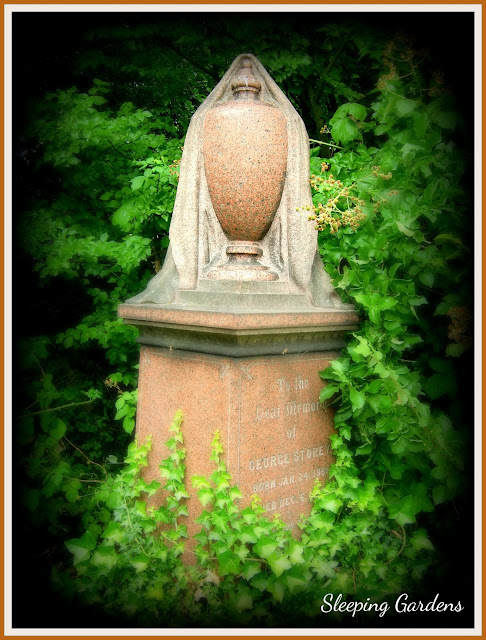Sunday, 31 March 2013
Wednesday, 27 March 2013
Wednesday's Children
In Loving Memory
of
Daphne Lund
Who Died 28 Dec. 1934
Aged 2 Years & 3 Months
God has Gathered in Our Darling
Placed Our Bud Amongst His Flowers
Taken Back the Child He Lent Us
To a Better Home Than Ours
Sweet
Memories of
Jeremy
Johnathon Nunn
Who Died the
21st Nov. 1960
ged 20 Months
Sleeping
In Loving Memory
of
Stephen John Lund
Who Died 22 Feb. 1950
Aged 1 Year 17 Days
How We Miss Our Little Darling
Our Sad Hearts Alone Can Tell
Jesus Thought it Best to Take Him
Home in Heaven with Him to Dwell
Tuesday, 26 March 2013
Sunday, 24 March 2013
Saturday, 23 March 2013
Killed by Shell in France
In
Ever Loving
Memory of
George
Ernest Reynolds
Who was Killed by Shell
in France
December 13 ~ 1916
Aged 34 Years
'Nearer my God to Thee'
In Loving Remembrance
George E Reynolds was a Private in the 6th Battalion York and Lancaster Regiment and he is buried in the Hamel Military Cemetery in Beaumont~Hamel in France.
The detail of the buds and broken stem with a fallen Flower are well detailed on this headstone. The buds are a reminder of the potential of a life cut tragically short and the broken stem depicts that ending. The flower in bloom shows us that the person reached adulthood, whereas a broken bud would often depict the loss of a child.
Wednesday, 20 March 2013
HMS Velox ~ Killed by Explosion
In
Loving Memory of
William Walter Allaby
Killed by Explosion on
H.M. Torpedo Destroyer Velox
Oct. 25th 1915 Aged 47 Years
Greater Love Hath No Man Than This'
That A Man Lay Down His Life
For His Country
Also Mary Ann Mottram
Niece of the Above
Died July 10th 1917 Aged 2 Years
Safe in the Arms of Jesus
Also Clara Beloved Wife of
William Mottram
Died April 17th 1935 Aged 60 Years
Rest in Peace
Also the Above Named William Mottram
Died March 18th 1953 Aged 78 Years
Re~United
H.M.S Velox
HMS Velox was a Viper class British Torpedo Boat Destroyer and on the 25th October 1915 it was out on patrol as one of the Portsmouth Local Defence Flotilla destroyers when it hit a mine. Forty two of the Fifty four crew members were lost when the vessel sank.
The Velox which means 'Swift' in Latin had originally been named HMS Python and had been part of the Snake Class of Naval vessels along with HMS Viper and HMS Cobra. The vessel's name was changed in June 1902 when it was purchased by the Admiralty following the loss of the Viper and Cobra in 1901, the Royal Navy did not use snake names again for their destroyers.
Although I cannot be certain of the names of these crew members of HMS Velox shown in this picture, I do know that the Ship's Mascot was a monkey named Winnie. Who is seen here with it's head bandaged after having an abscess treated.
More Information of HMS Velox
Labels:
Cheshire,
Royal Navy,
Runcorn,
Ships,
World War 1
Sunday, 17 March 2013
Friday, 15 March 2013
Friday's Funerary Customs ~ Professional Mourners
Professional Mourners known as 'Mutes' were hired to walk behind the hearse in Victorian times. They wore black draped hats and coats and carried draped banners and they bore a suitably dignified, somber countenance.
It was socially accepted that an elaborate funeral reflected the deceased's status and degree of respect they were therefore due.
There were strict social rules of mourning etiquette to be observed regarding mourning attire and obligatory timelines that had to be followed.
These mourning practices spread throughout Europe and professional mourners became affiliated and even went on strike for better wages.
Later on with the advent of modern motorized hearses now leading the funeral procession, professional mourners were relegated out of the ceremony all together.
The Victorian attitude frowned upon personal displays of emotion by the grieving family and relatives, so the hiring of a professional mourner would publicly display the families grief on their behalf. These mourners may have never known or met the deceased or family before being employed by them.
Professional mourners have been a traditional part of the funeral ceremony throughout history. It was felt that the greater the numbers of mourners in attendance was a symbol of the deceased's social standing and status and so it was believed that the loss was a more significant one. Additional mourners ensured a heartfelt show of grief.
In many cultures around the world, the professional mourners that were hired were women, due to their ability to weep and wail lamentably, which is known as keening.
mourners are mentioned in the Bible and were used by the Egyptians, during the time of the Pharaohs, a person's status could be judged by how many mourners were present at the funeral. Families hired large numbers of professional mourners to weep, throw dust in their hair and wave their arms around. The better they performed, the more money they received.
Today professional mourners are still employed in Egypt and groups of women can be seen keening outside the homes of the deceased.
By the end of the 18th Century many churches across Europe had forbidden keening as the Church and State believed the Promise of Heaven itself was thought to be enough to comfort the bereaved.
Members of the Orthodox Jewish faith still use professional mourners today. When a relative dies the mourners are required to go to the temple every day to recite the Mourner's Kaddish. A professional mourner ~ usually an older man ~ will cite the prayers for them.
In India professional mourners called 'Rudalis' are employed by wealthy families, their fees are determined by the level of wailing and the enthusiastic way in ahich their grief is displayed.
In China professional mourners known as 'Kusangren' dress in white robes ~ the traditional colour for funeral attire ~ are hired to sing, dance and cry and ensure a noisy and impassioned farewell for the departed.
In Kenya, a new generation of professional mourners are appearing, they are generally young men who are trying to supplement low wages. Depending on what the family requires of them, they will shout, blow whistles, weep and prostrate themselves or enjoy singing loudly along with the family.
The traditional belief in making a lot of noise, was seen to ward of evil spirits that could hamper the deceased's progress to the next life.
As traditional mourning etiquette evolves and changes in the Western world the focus is shifting from somber mourning rituals towards the more personal Celebration of Life. Formal Church services are being replaced with more relaxed memorials where the dearly departed's favourite music has replaced the singing of hymns. Anecdotes that help to uplift the mourners are more in favour, than focusing on the level of grief. Smiles and gentle laughter replace the tears and help just as much in the grieving process.
Wednesday, 13 March 2013
Wednesday's Child
In
Loving
Memory
of
Mabel Eleanor Bacon
Died January 31. 1916
Aged 9 Months
It is a sad fact that so many of these delicate little crosses no longer stand upright, whether this is due to their age or vandalism is not always known........
Some stones and their leaded letters seem to stand the ravages of time far better than those of an equal age.
Monday, 11 March 2013
Monday Mourning ~ Uprooted
In Affectionate Rememberance of
Louisa Ann the Beloved Wife of Frank Palmerstone Ellis
of Thorley Bourne
Who died 21st October 1885 Aged 32 Years
'Not Lost but Gone Before'
I love the mature trees of the older well established Cemeteries, it's what makes them such places of serenity. They stand like protective sentinels over the resting places of loved ones, sometimes however their growing habits can take over the spaces they shelter.........
Sunday, 10 March 2013
Friday, 8 March 2013
From the Customers
In Loving Memory
of
John Pilling
Died March 10th 1903
Aged 47 Years
also Margaret
Beloved Wife of the Above
Died Dec. 22nd 1919,
Aged 63 Years
also James, Arthur, Mary,
James Arthur & Martha
Beloved Children of the Above
who Died Young
also William Taylor,
Grandson of the above
Born Aug 16th 1903
Died March 10th 1905
Memories of Albert
From the Customers
I noticed this unusually large pillar style monument in Warrington Cemetery, Cheshire. I have seen others in a similar style but they tend to be only half the size of this one.
John Pillings grandson William Taylor, who is named on this monument, died on the same day as his Grandfather, some two years later aged two years old.
The monumental vase dedicated to 'Albert from the Customers', stands at the foot of the Pilling pillar and is a bit of a mystery, as there is no Surname for Albert and no other reference to him on the larger grave maker.
I wonder what type of service Albert provide his 'Customers' with ?
Wednesday, 6 March 2013
Wednesday's Child ~ Dove and Olive Branch
In
Loving Memory of
Ruby Alice
Titchmarsh
who died
August 16 1905
Aged 12 Years
'Not Death, but
Everlasting Life'
The Dove is a symbol of Purity and Peace and is often portrayed holding an Olive Branch which represents God's Peace with mankind.
Genesis 8:11 And the dove came in to him in the evening; and lo, in her mouth was an olive leaf pluckt off: so Noah knew that the waters were abated from off the earth.
Labels:
Birds,
Essex,
Saffron Walden,
Wednesday's Child
Monday, 4 March 2013
Monday Mourning ~ A Lover of Justice to Animals
To the
Memory of
Rachel Morgan
Dearly Beloved Wife of
Benjamin Howell
Morgan
Who Passed Away
May 18 1920 Aged 43
A Noble Woman, A Staunch Friend
And a Lover of the Justice to Animals
Sir Benjamin
Howell Morgan
At Rest
July 16 1937
Love is the Fulfilling
of the Law Rom 13.10
Josceline Menzies
Daughter
Born 7.3.1924
Died 5.6.2007
***
Sir Benjamin Howell Morgan, Engineer, Economist and Author who served on numerous committees concerned with trade and the Empire.
Labels:
Animals,
Author,
East Sheen Cemetery,
Sirs and Dames
Sunday, 3 March 2013
Subscribe to:
Posts (Atom)













































